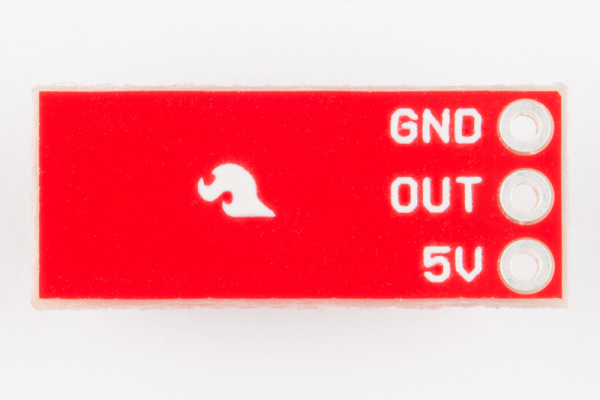HIH-4030 Humidity Sensor Hookup Guide
Hardware Overview
The RH sensor uses a laser trimmed, thermoset polymer capacitive sensing element with on-chip integrated signal conditioning. The sensing element's multilayer construction provides excellent resistance to most application hazards such as condensation, dust, dirt, oils and common environmental chemicals.
Protective Tape Removal
The HIH-4030 comes with a protective tape on the cover (sensing face). This tape is kept in place during our soldering process here at SparkFun. When you receive your HIH-4030 Breakout, you'll want to remove the protective tape.
Protective Tape Removal
Reference: Installation Instructions for the HIH-4030/4031 Humidity SensorsUseful tool to aid in this process: ESD Safe Tweezers
Pinout
The three pin breakouts on the HIH-4030 Breakout board make it easy to measure relative humidity (%RH) as an analog voltage.
| Pin | Description |
|---|---|
| GND | Ground |
| OUT | Voltage Output |
| 5V | Supply Voltage (5V) |
Voltage applied to the supply pins should be within 4-5.8VDC, optimally at 5V, making it perfect to power with your 5V / GND connections on your microcontroller shield like an Arduino or SparkFun Redboard. The data pin can be connected to an analog input of an Arduino, XBee, RaspberryPi, or any other IO device. The HIH-4030 has a low-power design. The sensor will typically only consume about 200μA.
Humidity Sensor Re-Conditioning
Humidity Sensors make use of a conductive polymer to measure relative humidity. If that polymer gets too dry (or over-saturated) the sensor won't function properly, but that can be reversed.
Any humidity sensors on our designs are put through a re-conditioning procedure to ensure that they keep their factory calibration. If you expose your sensor to a really dry environment for a prolonged period of time (or saturate it in a very humid environment) you may have to run it through the same process.


